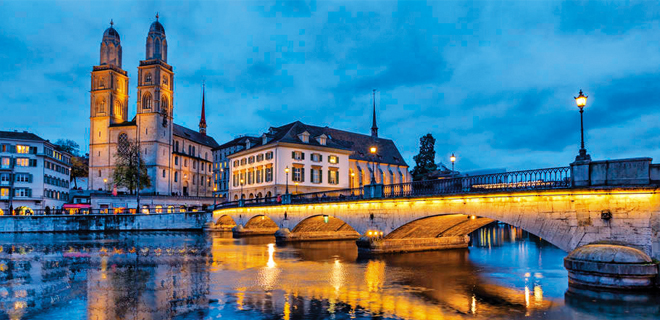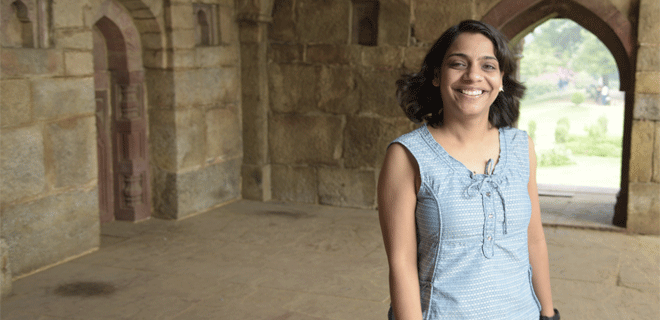A total knock out
The Knuckles hill range in Sri Lanka goes back to the mesolithic period and to this day remains inaccessible
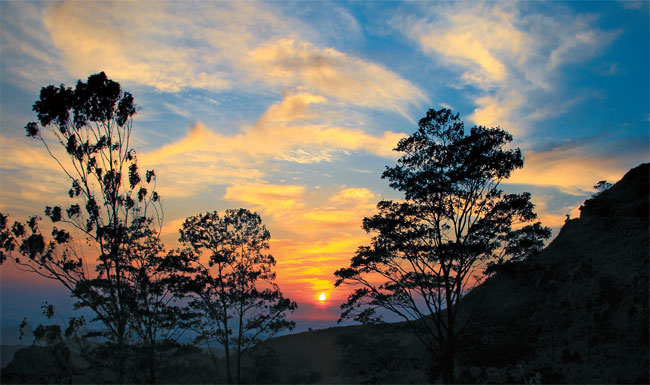
Although they won’t hit you in a fury, these knuckles will knock you out. And boy, so utterly. The jaw dropping Knuckles hill range in Sri Lanka is a rugged mountainous kingdom, recalling antiquity. You feel you’ve time travelled into bygone centuries—cloud robed hilly forests with no mobile signals, no electricity, no artificial sound and almost no man-made construction. Forest villages that had no road access till recent times steeped in past. You might not come across a biped for miles on the wooded winding paths. Without a GPS to guide you, the next available option is your fairy godmother. Tough luck if you’re way past believing in them.
The four peaks rise from the Earth like a fist outstretched, as if warning: Don’t pluck the pristine forests on my chest! UNESCO has taken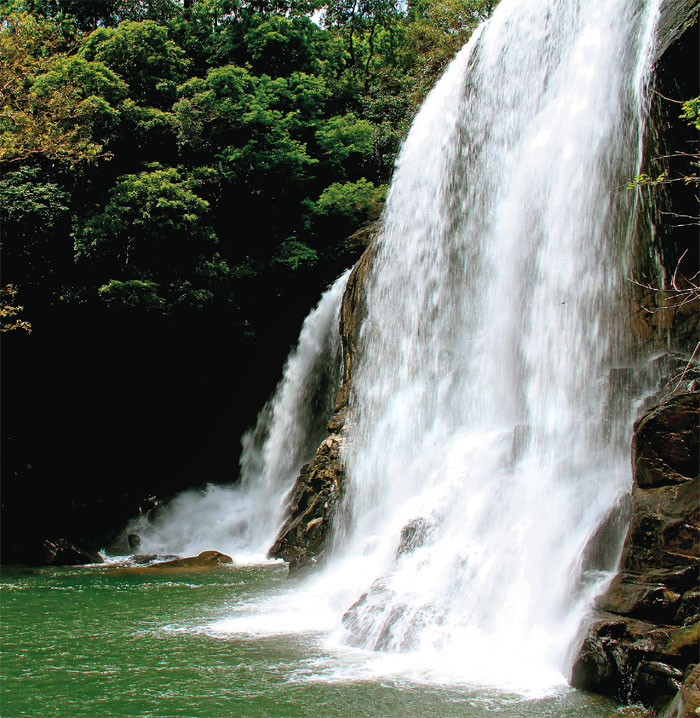 this warning seriously and declared the forest a World Heritage Site — a place of 'outstanding universal value'. Some British surveyors in colonial Sri Lanka saw these knuckles like folds from afar and gave it its present name. The locals have always called it Dumbara Kanduvetiya— the mist laden mountains. And that’s what they are. If this isn’t a monument, what is?
this warning seriously and declared the forest a World Heritage Site — a place of 'outstanding universal value'. Some British surveyors in colonial Sri Lanka saw these knuckles like folds from afar and gave it its present name. The locals have always called it Dumbara Kanduvetiya— the mist laden mountains. And that’s what they are. If this isn’t a monument, what is?
Topmost on our sightseeing list was a newly opened beach (after the war) on the east coast. We were knuckleheads to keep Knuckles as the last option. With no bookings available elsewhere, we drove down to Knuckles, in the Central Highlands, sceptically. As we drove up the hills, passed tea plantations and semi-evergreen forests in the foothills and valleys and patches of grasslands, the upper montane rainforests near the peaks interlaced with streams and waterfalls, and finally the cloud forests rich in ferns, mosses and brilliantly coloured orchids. By the time we were near the cloudy heavens, we were grinning like besotted idiots.
No new construction is permitted here. One or two places to stay near the misty peaks can’t even sport a board. Only a green painted rock would tell you where to turn to rest your bones. One such place is Sir John’s, a 120-year-old bungalow, which used to be the holiday home of the third prime minister of the island. A relic from the past, it has no electricity but huge candelabras, no fancy restaurant but just four tables overlooking the timeless vistas of ancient hills, clouds rolling over sleepy peaks and a gentle old fountain that has trickled for the most eminent admirers.
John Davy wrote in 1821 about Knuckles, “I never saw before so perfect a specimen of forest scenery. Here lie trees of different kinds, sizes and ages: some saplings, some dead and decaying, and some of very great bulk and height towering above the rest in their prime”. In the isolated cloud forests near the peaks live some animals and plants not found in the rest of the world. The KnucklesConservationForest does not just have four peaks; it consists of 35 peaks, 14 of them more than 1500m above the sea level. Pygmy forests also occur in Knuckles. Gnarled and twisted, hundreds of year’s old tiny trees covered with lichens, mosses, ferns and orchids, stand like elders with bent backs and timeless tales.
A small mammal, the montane slender loris, thought to be extinct was recently found in these central highlands. Five new species were also discovered in a 10 sq.km area. Oh well, they’ve always lived happily there. It’s just that we have found them now, like Vasco De Gama ‘discovered’ us.
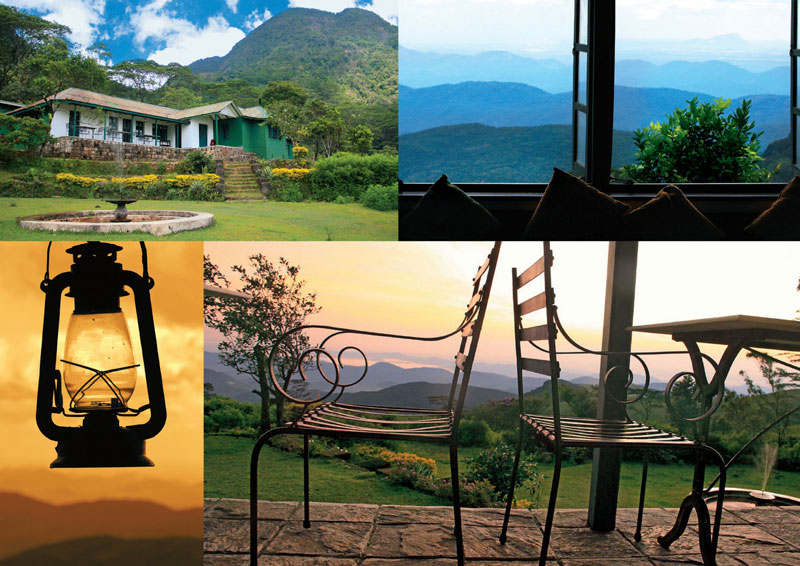
Clockwise from above: The 120-year-old retreat in the mountains; a portrait from the window; view from the bungalow at dusk; a lantern adds to the rustic feel of the surroundings
The peaks that slope down to meet the lowlands are home to many small and large critters. They dwell in different areas depending on the rainfall, height, topography, etc. Some prefer grassy neighbourhoods, others the privacy of a thick forest, and yet others the music and views of a waterfall. Ninety-nine animals are endemic to this region. A stunning diversity of orchids hangs on trees, looking posh. Mosses and ferns prefer their wet ground dwellings. There are a variety of fish, crabs, molluscs, geckos, skinks, calotes, snakes and amphibians. No less than 160 kinds of birds of different feathers flock together. Some of them are known to feed in mixed flocks. Barking deer, sambar deer and elephants roam only on the periphery of the forest. The Sri Lankan leopard, toque macaque, golden palm cat, spotted deer and long-clawed shrew co-exist in the hills. All residents are busy frolicking, heckling, disapproving, deceiving, hunting and being hunted.
The Mini World’s End is a nice walk through streams and open grasslands to a steep, vast drop. The loveliest are the waterfalls. A couple of hours drive down the peaks will take you to a different forest and climate. While the peaks are cold and windy, the lower reaches are warm and humid. If you do not have a local along, you can feel lost like Hansel and Gretel. Once you drive through the shady groves and cross flocks of butterflies on the way, you’ll reach Sera Ella (falls) in the Dumbara jungles. Here, you can look at the world from behind a falling curtain of water!
The mesolithic man lived in the caves in Knuckles, or so say the archaeologists. But, 300BC onwards Buddhist monks occupied these caves. Due to the extreme remoteness of the villages, their culture, dwelling and lifestyles still have traces of their ancient inhabitants. It is believed that Meemure village was the place of exile for the last king of Sri Lanka, who took refuge here with his family when he was being pursued by the British. Their inaccessibility shielded the ancient villages from industrialisation, colonisation and independence, media, and the more recent WhatsApp.
You also feel secure in your little refuge in the cloud forests. As the day-worn sun unburdens its fanciful colours and tosses them in the sky and the symphonies of a jungle evening take over, you feel how a Buddhist monk did—a vagrant, at peace with yourself and the world.
The writer is an author, columnist and Ex-Hon. Wildlife Warden, Udaipur



